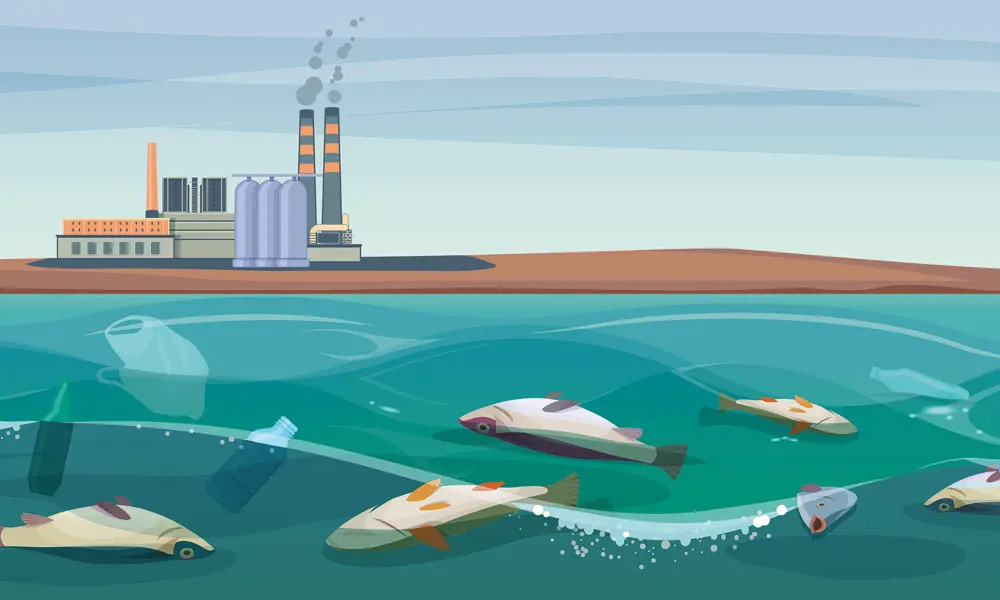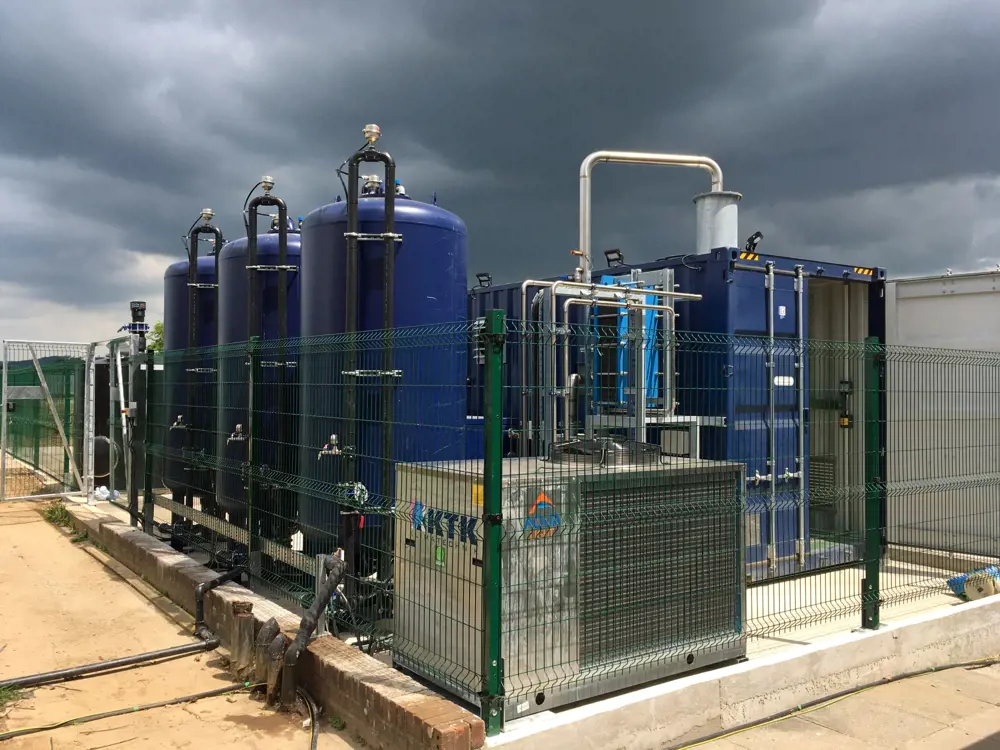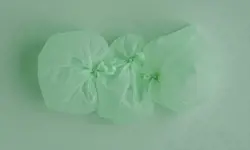
How to remediate forever chemicals
Did you know?
🤔 So what's wrong with forever chemicals a.k.a. PFAS?
- While they have many useful applications, forever chemicals accumulate in the environment and in our bodies (and are found as microplastics, too)
- Governments around the world are moving to set new legal limits on the acceptable concentration of forever chemicals in drinking water
- Manufacturers are phasing out PFAS and finding alternatives for them in applications such as waterproof clothing
Chances are, you’ve heard of ‘forever chemicals’ – and have probably come across them in daily life. Just this year, researchers have found them in pregnant women’s blood, on organic kale, and even in toilet paper. This comes alongside a growing pile of epidemiological evidence that exposure to forever chemicals could be implicated in “a variety of health effects, including altered immune and thyroid function, liver disease, lipid and insulin dysregulation, kidney disease, adverse reproductive and developmental outcomes, and cancer”.
In chemistry terms, forever chemicals are known as per- and polyfluoroalkyl substances (PFAS). They are a group of synthetic chemicals with atoms of fluorine (the F bit), and other elements strung along a chain of carbon atoms. There are thousands of PFAS, some of which have been around since the 1940s.

The foams used to combat jet fuel fires at air bases have been a major source of forever chemical pollution worldwide © Shutterstock
The problems with PFAS
🧪 What makes PFAS so tricky?
Chemical engineers are following several hopeful options for removing PFAS from water, but it’s no easy task:
Our understanding of this tricky chemical family is limited
This makes it hard to detect them in the first place. According to the American Water Works Association, only a relatively small number of PFAS can be reliably measured. The number of PFAS whose treatment has been rigorously studied in peer-reviewed research is even smaller.
There's a vast list of unknown PFAS
We don't know what many of the PFAS molecules created by manufacturers look like. Many are still under patent, with water treatment labs unable to access standards to allow them to look for these. “We see things happening in treatment plants that show elevated levels of a PFAS, but we have no way of analysing it and quantifying it,” says Matt Ingram, from environmental remediation and water treatment firm Cornelsen.
You only need a tiny amount of PFAS for it to be problem
In the UK, the guideline limit in drinking water is 100 nanograms per litre, per specific PFAS compound. (This is two thousand times less than a teaspoon dissolved in an Olympic swimming pool.) The Royal Society of Chemistry has recently suggested this should be reduced to 10 nanograms per litre. “You have people saying we can tackle PFAS with activated carbon, for example, but you need more and more [storage] vessels in order to get to the very low discharge limits,” says Henrik Hagemann, CEO and Co-Founder of Puraffinity, a UK startup that is developing PFAS remediation technology.
The length of the PFAS molecule’s carbon backbone is also important
At the turn of the millennium, regulators raised the alarm about the degree to which PFAS molecules with long carbon chains were accumulating in people and the environment. Global chemical manufacturers switched to molecules with shorter chains. However, these new PFAS molecules containing shorter carbon chains are more water-soluble, and as a result, harder to extract than short chains.
On top of this, PFAS concentrations can be so low that it can be difficult to measure the effects of treatment.
The strength of the carbon–fluorine bonds makes these chemicals very versatile – for example, they are oil- and water-repellent, and heat-resistant. Thanks to these properties, manufacturers have used them in many things, from foams for firefighting, to waterproof clothing, nonstick cookware, coatings inside pizza boxes, and cosmetics. They’re even essential to the semiconductor industry. However, the properties that make them so useful in their intended applications also make them persistent in the environment – and dangerous to wildlife and people.
As the carbon–fluorine bond in PFAS molecules does not occur in nature, there is no known biodegradation pathway. PFAS can find their way into the water that we drink and get into our bodies, and are also difficult to remove with conventional water or soil treatment technologies. With unsafe levels detected in drinking water in the US and Europe, the race is on to solve the PFAS problem. That means safely capturing and removing the molecules and then destroying or storing them.
Extracting PFAS in solids and with bubbles
Firefighting foams have caused some of the most significant environmental leaks of PFAS. Now largely phased out, perfluorooctane sulfonate (PFOS) was a component of aqueous film-forming foams (AFFFs), used extensively to put out fires in airfields.
UK- and Germany-based firm Cornelsen has been targeting PFOS for more than 10 years, starting out with airfield remediations of jet fuel fires. Now, the company offers AFFF decontamination of fire trucks and appliances, in-situ remediation, and industrial water treatment systems.
“There was a lot of it [PFOS], and we tried treating it conventionally, with adsorbent material. We quickly realised that was unsuccessful, incredibly expensive, and not very effective. It also produced a huge secondary waste stream,” says Matt Ingram, general manager at Cornelsen.
How to extract forever chemicals from water
💧 Adsorption or separation?
Water treatment approaches to remove PFAS generally fall into two categories. The first is adsorption, where they ‘stick’ to a solid substrate mixed into the contaminated water. The second involves separating them from the solution.
Adsorption usually deploys porous materials to maximise the surface area that the PFAS can stick to. The process often uses particles of processed charcoal or micrometre-sized polymer beads. However, neither approach removes all types of PFAS and both can get clogged up with other (non-PFAS) molecules. Once finished with, the porous material is then fully saturated with a high concentration of PFAS. This secondary waste stream must be safely stored or destroyed.
The team focused on separation approaches (see ‘How to extract forever chemicals from water’). Working with the German applied research institute, Fraunhofer Institute for Environmental, Safety and Energy Technology UMSICHT, Cornelsen came up with PerFluorAd. When added to contaminated water, this cost-effective biodegradable agent causes dissolved PFAS (including PFOS) to separate out in tiny solid clumps (precipitate) that can be filtered out of the solution.
In the past five years, the company has been rinsing out firefighting appliances contaminated with PFAS. Demand in Germany has been consistently high and is growing in the UK. Ingram says the approach removes over 99% of longer chain PFAS present, including PFOS.
Later, the company came across a sustainable PFAS remediation technology developed by Australian company Epoc Enviro. Surface-active foam fractionation (SAFF) uses rising air bubbles to remove PFAS contaminants from contaminated water. PFAS molecules have both water-loving and water-hating components, making them a ‘surfactant’ (like soap). Because of this, the PFAS stick to the surface of bubbles before they rise to the surface.

Cornelsen’s remediation plant, which uses separation approaches © Cornelsen Ltd
“It foams PFAS out of the water, then concentrates that foam many times further. We end up with a very small amount of liquid waste, and the water passes through clean the other side,” says Ingram.
According to Ingram, PerFluorAd and SAFF are the only technologies that don’t create a large secondary waste stream. “PerFluorAd is dosed into the water and removes the PFAS as a solid. We then filter that out. So, the waste stream is as small as the amount of PFAS in the water.”
However, a major challenge for Cornelsen has been getting regulators to approve the technology, resulting in significant delays. “Scaling up has also been hard, in terms of both finance and establishing constant stable treatment,” says Ingram.
Designer granules
In tackling forever chemicals, Puraffinity, a green tech company based in the UK, has developed smart granules that can selectively remove PFAS from a contaminated solution. Puraffinity’s CEO and Co-Founder, Henrik Hagemann, was in an Imperial College London team in 2014 that entered an MIT competition to find solutions to pressing environmental challenges. “The issue that came up again and again was contaminants in water,” says Hagemann. “We kept being asked about these fluorinated compounds, so we began looking into using activated carbon materials.”
Back then, “there wasn’t even a name for PFAS”, he says. “We learnt about them from customers with contamination issues, like an airport that needed to clean up run-off water from firefighting foam drills, and the oil and gas sector that used [PFAS such as PFOS] to inhibit fires on oil-drilling rigs.”
In tackling forever chemicals, Puraffinity, a green tech company based in the UK, has developed smart granules that can selectively remove PFAS from a contaminated solution.
Having raised £20 million, the company has spent nearly £13 million developing this smart material for environmental remediation and decontaminating industrial manufacturing facilities, commercial airports and military bases. “At first, we focused on developing a membrane, but we found it got blocked up,” he says. “So, we switched to a granule … You can just dump it in, like a pellet into an industrial-sized media bed.”
Unlike conventional ‘blanket’ approaches, Hagemann and his team tailored the granule to selectively remove different types of PFAS. To do this, they developed special peptides mimics – short chains of amino acids, the building blocks of proteins – that preferentially stick to different PFAS molecules. They then took these peptide mimics and coated the granules with them so that, in a contaminated solution, PFAS molecules would attach themselves to the coated granules.
Additionally, when the granules are fully saturated with PFAS molecules, they can ‘regenerate’. This removes the PFAS molecules, so that the granules are ready for another round of decontamination. The successfully separated PFAS must then be stored or destroyed.
Finding peptide mimics that interact in the right way with both the granules and the pollutants has been no easy task. The team has generated enormous data sets with tens of thousands of data points to measure how well different materials stick to PFAS molecules of interest. They have patented one material that sticks to six of the most common PFAS.
Puraffinity has recently manufactured the granules at its largest scale yet, a batch of up to 50 kilograms. It is working with the German government to validate the product’s safety at TZW, a site run by DVGW, the German Technical and Scientific Association for Gas and Water. “It has been third-party validated at the German government-owned site, and their sites in the US – so we can roll that out for industrial installations.”
In this pilot phase, the team anticipates being able to treat 25 tonnes of water a day. Beyond the pilot, Puraffinity would be able to roll out to high-flow installations, treating up to 500 cubic metres (approximately 500 tonnes) of water an hour, equivalent to a typical chemical manufacturing plant’s water use. Most of their sites are in the US or Europe, with more to be announced as they go live. “We want to keep the public onboard. Solutions are coming – it’s not just that we’re finding more [and more] PFAS!”
"Solutions are coming – it’s not just that we’re finding more [and more] PFAS!”
Henrik Hagemann, CEO and Co-Founder of Puraffinity

PFAS have been widely used in waterproof clothing and outdoors equipment (such as ski wax) © Shutterstock
Destroying leftover PFAS
The final piece of the puzzle is what to do with the PFAS left after processing. In the past, researchers heated the waste to temperatures of up to 1400°C. However, this energy-intensive process can still release harmful chemicals.
As a result, many startups and researchers are searching for safer options. In October 2023, MIT Technology Review reported on several US-based PFAS destruction technologies, some established, others emerging. The Michigan-based company Revive Environmental uses an approach called supercritical water oxidation. Here, relatively high temperatures and pressures turn water to a supercritical state, where it has both liquid-like and gas-like properties. These conditions help to break the strong carbon–fluorine bonds, with inert salts its only byproducts. Other methods bombard PFAS with high-energy electrons, or use high pressures and temperatures coupled with alkaline catalysts.
According to Hagemann, the new destruction technologies are “exciting, but not [at a] commercial stage yet.” He adds that these next-generation destruction companies also need “next-gen capture steps”, such as Puraffinity.
Another destruction technology has emerged from Northwestern University in the US. The Northwestern team’s August 2022 study in Science showed PFAS can be destroyed at temperatures of up to 120°C in a solution of two relatively harmless chemicals: sodium hydroxide or lye, a chemical used to make soap, and dimethyl sulfoxide. Only safe byproducts were left at the end.
More innovations in remediation are coming, and one promising approach is with ultrasound. Dr Madeleine Bussemaker, a chemical engineer at the University of Surrey, has been studying how to turn forever chemicals into relatively harmless carbon dioxide and fluoride. She and her colleagues reported in 2020 that ultrasound can completely degrade all PFAS so far tested. Although ultrasonic degradation is still at an early stage, the team aspires to develop a large reactor capable of treating contaminated domestic water supplies or firefighting foams and adapting the process for soils.
Challenges remain
While Hagemann describes existing technology to be “incapable of removing PFAS contaminants to the level required to keep up with these changing regulations”, he agrees regulation is the way forward.
Although there have been proposals to ban PFAS (in March 2023, the EU began a public consultation on this – now abandoned), Hagemann does not support a total ban. “I’m a biomedical engineer and I know a double-digit percentage of medical devices, say, are manufactured using PFAS. How are you going to phase them all out as a class?”
Yet, he has been contacted by people who have had stents inserted in the heart because of built-up cholesterol, and checks have found them to have very elevated PFAS levels. “It’s a sense of urgency that really centres us as a company. This is a once-in-a-generation chance for an engineer to have a real impact on people’s lives,” says Hagemann. He describes one way to lower the concentration of PFAS in your body: donating blood. A public study found that by giving blood, you donate a disproportionate amount of your PFAS.
Hagemann adds: “This space is one of the hardest problems being worked on in sustainable materials. You have the vast chemical design space, where brute force manual search isn’t enough; and you have the nonlinear behaviour of PFAS, which requires you to have a lab and run the analytics to get the different disciplines speaking. It’s not just money – it’s also time. But the more focus we put on PFAS, the more companies will be trying to develop new alternatives.”
"The more focus we put on PFAS, the more companies will be trying to develop new alternatives.”
Henrik Hagemann, CEO and Co-Founder of Puraffinity
They already are. In October 2022, the highest-profile brand in the outerwear materials industry, Gore-Tex, replaced its world-famous formula for waterproof clothing with its new PFAS-free membrane, GORE-TEX® ePE (expanded polyethylene) membrane. Patagonia, a leading role model in sustainable clothing, calls ePE “the game changer”.
More recently, global chemicals manufacturer 3M pledged to discontinue its PFAS manufacture by 2025. In August 2023, the company reached a $10.3 billion settlement with the US government after claims by public water providers that it polluted drinking water with PFAS.
It just goes to show – alongside all the concern and challenges, there is optimism in the search for safe, clean solutions to remediating PFAS.
Contributors
Matthew Ingram is a chartered engineer who has worked with Cornelsen in the remediation industry since 2005. Over the past six years, his focus has been on treating ‘difficult’ waters, which include PFAS. This includes new and evolving technologies and sustainable options wherever possible.
Henrik Hagemann is CEO and Co-Founder of Puraffinity. He holds a master’s in biomedical engineering from Imperial College London, specialising in advanced biomaterials and synthetic biology. Henrik is a Royal Academy of Engineering Enterprise Fellow, has trained in martial arts with the Shaolin Monks and cycled along the Silk Route, including China, Kazakhstan, Russia and Ukraine, in 87 days.
Beverley D’Silva’s journalism includes editing and writing for The Sunday Times, the Guardian and BBC Culture, and interviewing James Dyson, Judi Dench and the Dalai Lama among others. Her first story for Ingenia was on artificial reef structures to combat coastal erosion; here, she covers Forever chemicals, another pressing eco issue we face. Beverley has cycled part of the Shimano Kaido in Japan and coaches in breath work and sound therapy.
Keep up-to-date with Ingenia for free
SubscribeRelated content
Chemical

Q&A: Olivia Sweeney
Olivia Sweeney sources aroma chemicals to create fragrances at cosmetics company Lush. She is working on finding new, more sustainable sources of fragrance ingredients, with an interest in the research and development of chemical production from waste streams.

Biofuels’ journey to the mainstream
Liquid biofuels today make up about 8% of road and non-road fuel supplies in the UK. The government plans to reach nearly 10% by 2020 in order to reduce CO₂ emissions. It has also laid out targets to incentivise innovation and the production of ‘development fuels’.

Compostable plastics
Compostable plastics can be turned – alongside food and other organic waste – into compost. But how environmentally friendly are they really?

Q&A: Michelle Watiki
From placements at Xerox and Rolls Royce, to becoming a board member for the Association for Black and Ethnic Minority Engineers, chemical engineering graduate Michelle Watiki hopes to apply her knowledge to sustainability and net zero, as well as helping future engineering students.
Other content from Ingenia
Quick read

- Environment & sustainability
- Opinion
A young engineer’s perspective on the good, the bad and the ugly of COP27

- Environment & sustainability
- Issue 95
How do we pay for net zero technologies?
Quick read

- Transport
- Mechanical
- How I got here
Electrifying trains and STEMAZING outreach

- Civil & structural
- Environment & sustainability
- Issue 95